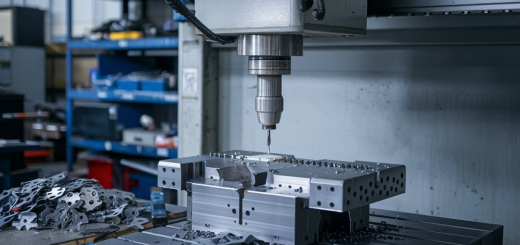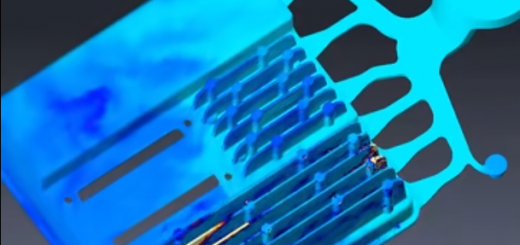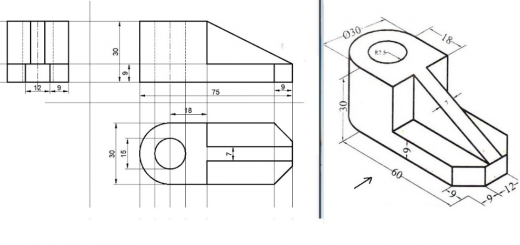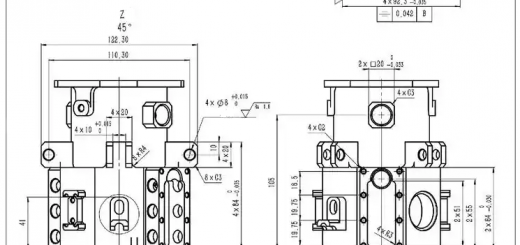40Cr vs 45# Steel, What’s The Difference?
When it comes to tool steel grades, two of the most common designations you’ll encounter are 40Cr and 45#. While they may sound similar, there are important differences between 40Cr and 45# steel that toolmakers need to understand to select the right material for their application. Today, we’re going to find out the differences between 40Cr and 45# steel.

What’s 40Cr Steel?
40Cr steel is a chromium alloy steel containing approximately 0.4% carbon and 0.8-1.1% chromium. The addition of chromium provides good hardenability, meaning the steel can be rapidly hardened through heat treatment.
What’s The Property Of 40Cr Steel?
-Higher strength compared to plain carbon steels due to solid solution strengthening from chromium.
-It can be hardened and tempered to achieve good combinations of strength and toughness.
-Hardened 40Cr steels typically have tensile strengths over 1000 MPa.
-Increased corrosion resistance relative to carbon steels due to formation of chromium oxide protective scale.
-Machinability is decent as chromium does not markedly reduce cutter life.
-Medium hardness of 45-50 HRC can be attained through proper heat treatment.
What’s The Application Of 40Cr Steel?
Common applications of 40Cr steel involve components in the automotive, construction machinery, agricultural and bearing industries where good wear resistance, hardness and toughness are required. It provides an economical alternative to alloy steels in many applications. The chromium content makes it heat-treatable for modifying mechanical properties.
What’s 45# Steel?
45# steel is a low-carbon steel that contains approximately 0.45% carbon by weight. The number “45” in its name refers to the carbon content in hundredths of a percentage point.
What’s The Property Of 45# Steel?
-Higher ductility and toughness compared to higher-carbon steels due to low carbon composition.
-Strength is moderate at around 370-510 MPa but hardening response is poor since carbon content is minimal.
-Machinability is excellent as carbon is the main influence on cutting tool wear. Chips break easily during machining operations.
-Weldability is good as the low carbon promotes slag removal and reduces cracking sensitivity in welded joints.
-Corrosion resistance is fair and can be improved with protective coatings if necessary.
What’s The Application Of 45# Steel?
Common applications of 45# steel involve structures, vessels, pipes and mechanical components where good formability is important. It is often used in shipbuilding, boilers, pressure cylinders and structural steel fabrication. In essence, 45# steel provides an economical, readily formed and welded option for general engineering construction whereas higher carbon steels are primarily used in applications requiring increased hardness or strength.
40Cr vs 45# Steel, What’s The Difference?
Classification: 40Cr steel is a chromium alloy structural steel. It contains 0.8-1.1% chromium which exceeds the lower limit of 0.3% to be considered an alloy steel. 45# steel contains no intentionally added alloying elements so it is categorized as a plain carbon steel.
Composition: 40Cr steel contains 0.37-0.44% carbon to provide hardness and 0.8-1.1% chromium for improved hardenability. Small amounts of other elements may also be present. 45# steel has a carbon content of 0.42-0.5% which is sufficient for mild strength but offers limited hardenability potential on its own. It contains no other alloying additions.
Mechanical properties: 40Cr steel can achieve tensile strengths over 1000MPa when properly heat treated, higher than 45# steel’s 370-510MPa range. Chromium increases 40Cr steel’s hardness to 45-50 HRC after quenching and tempering vs 30-35 HRC for 45#. 45# steel has higher ductility/toughness than 40Cr steel due to its lower carbon composition.
Machinability: 45# steel machines much easier than 40Cr steel as carbon is the main factor affecting tool wear. Its chips break cleanly. 40Cr steel machinability is reduced marginally by chromium but still considered good for an alloy steel.
Heat treatment: 40Cr steel requires quenching in oil to better control its higher hardenability and prevent cracking on rapid cooling. 45# steel can be quenched in water due to its weaker hardening response.
Price: 40Cr steel incurs higher production costs associated with alloying element additions and special heat treatment. 45# steel, as a basic carbon steel, is more economical for non-critical applications.
| Property | 40Cr Steel | 45# Steel |
| Classification | Chromium alloy structural steel | Plain carbon constructional steel |
| Carbon Content | 0.37-0.44% | 0.42-0.5% |
| Chromium Content | 0.8-1.1% | None |
| Tensile Strength | Over 1000 MPa | 370-510 MPa |
| Hardness | Hardness | 30-35 HRC |
| Ductility | Lower | Higher |
| Machinability | Good | Excellent |
| Quenching Medium | Oil | Water |
| Applications | Gears, shafts, components requiring high strength | Structural elements, mild components |
| Production Cost | Higher | Lower |

















